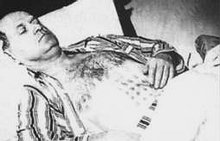

SOOOO!
WHEN CAN I TAKE DELIVERY?
http://www.nidsci.org/pdf/mccampbell.pdf
Which is a pdf file titled:
EFFECTS OF UFOS UPON PEOPLE by James McCampbell
http://www.ufoevidence.org/documents/doc491.htm
Physical Evidence Related to UFO Reports (Sturrock Panel): Physiological Effects on Witnesses
Schuessler also described several cases in which witnesses experienced multiple sensations including the following: uncontrollable hand motion; eye irritation; difficulty in breathing; an acid taste in the mouth; a sensation of the hair on the arm standing up; loss of consciousness; eye damage so that the witness could barely see; a mark on the hand of a witness where she reported that she has been hit by a beam; a red crust of soft skin on the face that felt sensitive to the touch; and a sensation of heat. Physiological effects were reported that could be long lasting, including the following: burns; temporary deafness; singeing of hair; laceration; swelling; nausea, that could continue for months and could lead to weight loss; loss of sight that could take months to overcome; severe itching; memory loss; burn marks; double vision; nose bleeds; and change of urine color. For more information on cases leading to such effects, see Schuessler (1996).
Schuessler gave an extensive account of a notable case that occurred near Dayton, Texas, on December 29, 1980 (Schuessler, 1981; 1988; 1998). This is known as the "Cash-Landrum" case since it involved Betty Cash, then a 51 year old business woman, and Vickie Landrum, then a 57 year old employee in a restaurant. It also involved Landrum's grandson Colby, then 7 years old. According to their reports, they encountered a large diamond-shaped object hovering above the road in front of them. Flames were belching from the bottom of the craft. The interior of the car became hot, forcing them to leave the vehicle. However, Colby and Landrum returned to the vehicle out of fear. Cash remained outside the automobile for seven to ten minutes. The object rose into the night sky and moved away. According to their reports, the object was accompanied by 23 helicopters that Cash and Landrum assumed to be military.
The witnesses were initially affected mainly by the heat and the bright light, and they developed headaches. During the night, Colby vomited repeatedly and his skin turned red. The same happened to Landrum. Cash fared even worse: large water blisters formed on her face and head, and by morning her eyes had swollen shut. The three witnesses continued to have severe nausea: even water would make them vomit; they developed diarrhea, and their health deteriorated severely. Cash was taken to a hospital where she was treated as a burn patient. This was the first of more than two dozen periods of hospital confinement for Cash.
Schuessler listed the following medical problems developed by the three witnesses: eyes swollen, painful and watery; permanent damage to the eyes; stomach pains, vomiting and diarrhea; sores and scarring of skin, with loss of pigmentation; excessive hair loss over a several-week period, the new hair having a different texture from the old; loss of appetite, energy and weight; damage to fingernails and shedding of fingernails; increased susceptibility to disease; and cancer.
The Cash-Landrum case seems to be unique in that there is detailed documentation of the injuries (photographs, etc.), and of the subsequent medical treatment. The case seems also to be unique in that it appeared to involve military helicopters, raising the possibility that a secret military operation was in progress (Schuessler, 1996).
As Schuessler pointed out, most witnesses who suffer from injuries do not tell their physicians about the events that appear to have led to injuries and, if they do, they find that the physician does not believe them. Follow-up examinations are rare, and investigators usually collect little more than anecdotal data. Nevertheless, some patterns seem to emerge concerning the types of injury that are reported: it appears that burns (and/or sensation of heat) and eye problems are the most frequently reported forms of injury.
